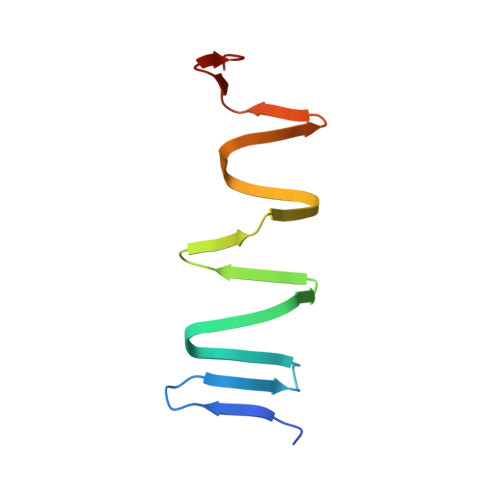Function of the bacteriophage P2 baseplate central spike Apex domain in the infection process.
Miller, J.M., Knyazhanskaya, E.S., Buth, S.A., Prokhorov, N.S., Leiman, P.G.(2023) bioRxiv
- PubMed: 36865152
- DOI: https://doi.org/10.1101/2023.02.25.529910
- Primary Citation of Related Structures:
8VOL, 8VOM, 8VON - PubMed Abstract:
The contractile tail of bacteriophage P2 functions to drive the tail tube across the outer membrane of its host bacterium, a prerequisite event for subsequent translocation of phage genomic DNA into the host cell. The tube is equipped with a spike-shaped protein (product of P2 gene V , gpV or Spike) that contains a membrane-attacking Apex domain carrying a centrally positioned Fe ion. The ion is enclosed in a histidine cage that is formed by three symmetry-related copies of a conserved HxH (histidine, any residue, histidine) sequence motif. Here, we used solution biophysics and X-ray crystallography to characterize the structure and properties of Spike mutants in which the Apex domain was either deleted or its histidine cage was either destroyed or replaced with a hydrophobic core. We found that the Apex domain is not required for the folding of full-length gpV or its middle intertwined β-helical domain. Furthermore, despite its high conservation, the Apex domain is dispensable for infection in laboratory conditions. Collectively, our results show that the diameter of the Spike but not the nature of its Apex domain determines the efficiency of infection, which further strengthens the earlier hypothesis of a drill bit-like function of the Spike in host envelope disruption.















